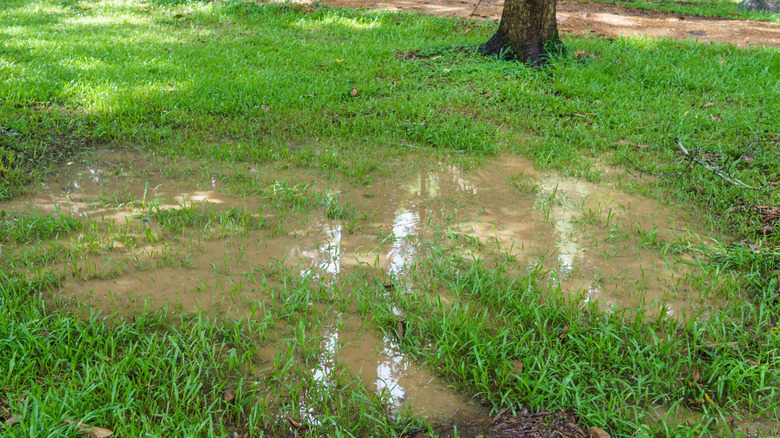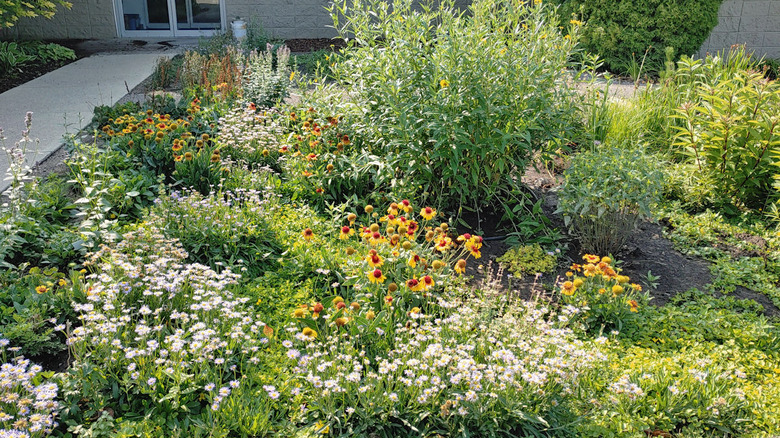Prevent Rain Runoff With A Natural Gardening System That Really Works
If you've ever experienced flooding in your yard or garden, you may have found yourself wondering if there's anything you can do to prevent rain runoff. After large amounts of rain fall during storms, there is often more water than the land can absorb, causing water to flow across the ground. Rainwater runoff can overwhelm stormwater management systems in urban areas during large downpours and cause pollution to enter local bodies of water. At home, copious rainfall can also be a problem — during periods of excessive rain, your garden may flood or pool up in low spots. Luckily, there's an attractive natural solution to this problem that really works: strategically growing native plants.
Compared to the turf grass that most people grow in their yards, native plants have roots better adapted to absorbing water during storms. With 50 million acres of turf grass in the U.S., that means there is lots of room for improvement. Unlike non-natives, native plants are also adapted to local weather conditions, such as extensive rains interspersed with dry periods. Growing the right native plants in a natural gardening system can gradually improve the permeability of the soil, making it able to hold more water. Plus, along with helping prevent rain runoff, native plants are also perfect for bringing birds to your yard.
How to grow native plants to prevent rain runoff
To get the most runoff prevention from native plants in your garden, assess your yard first and look for places where water is flowing or puddling during rainstorms. These are the locations where your soil can likely benefit from the roots of native plants to absorb more of that rainwater. Depending on your property, you may use native plants to create a rain garden — a smart, natural gardening system for excess stormwater flooding your yard — or build a bioswale, a sloped channel to help direct the flow of runoff away from the foundation of your home. Native plants are also effective when added next to streams and creeks to naturally help stabilize banks and prevent erosion.
When choosing plants, pick species that tolerate wet soil for up to 48 hours, which is the time it can take for the soil to drain after a storm system passes through. The best plants will depend on your region, but some native plants that naturally help prevent rain runoff have a widespread range and can be used by many gardeners. Consider perennials such as yarrow (Achillea spp.), milkweed (Asclepias spp.), and goldenrod (Solidago spp.) for rain gardens. Woody shrubs that work for stream or creek bank stabilization during heavy rain include fragrant sumac (Rhus aromatica), ninebark (Physocarpus opulifolius), and shrubby willows (Salix discolor). Be sure to choose native plants that are adapted to your site and USDA Hardiness Zone, paying attention to the plants' needs for sun and soil type.

